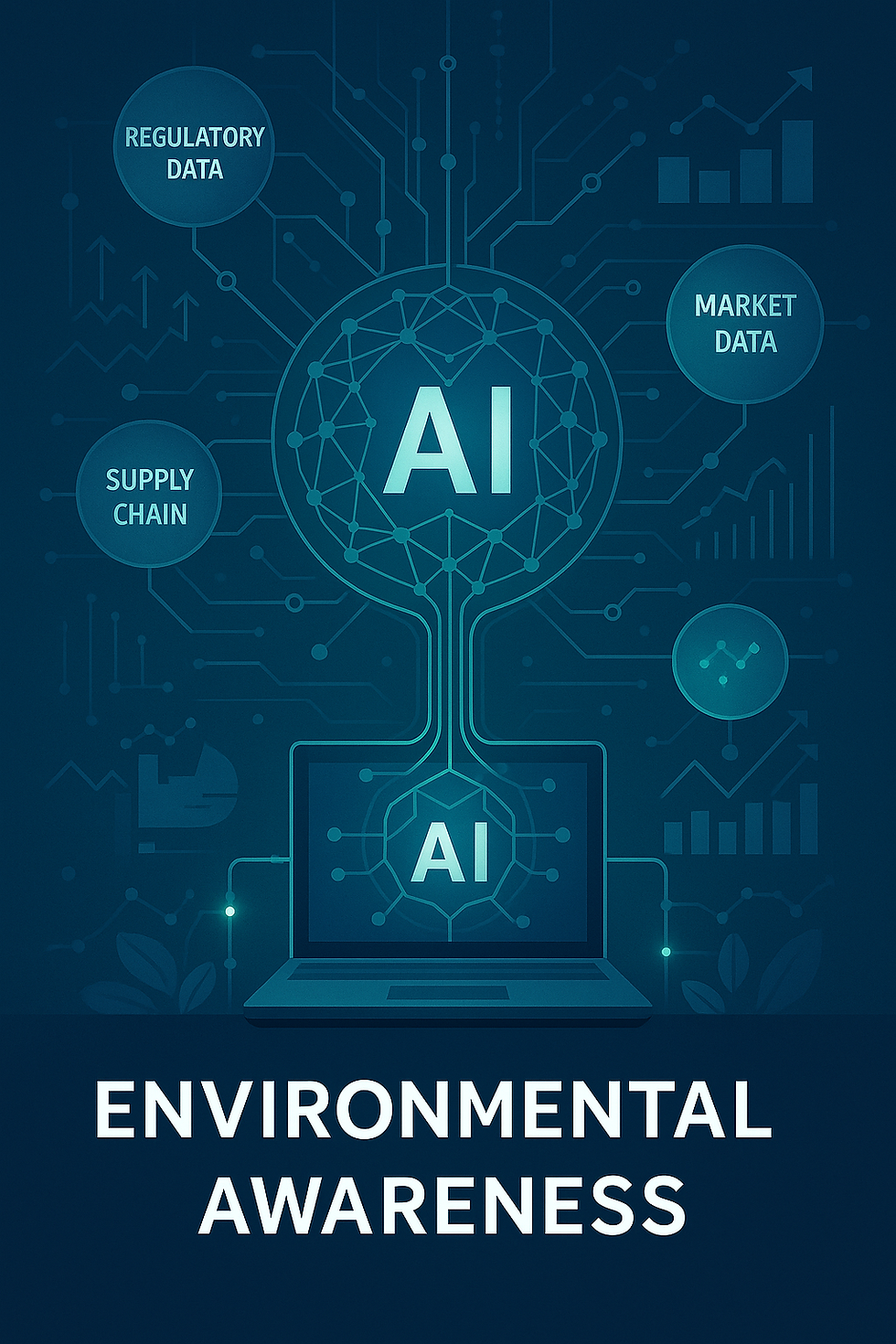Future-Proofing Your Business: How Adaptive AI Systems Evolve With Your Organization
- Anush Chandra Mohan
- May 13
- 3 min read
Updated: Jun 28
In a business landscape characterized by rapid change and unpredictable disruptions, traditional static technology solutions quickly become obsolete. Yesterday's cutting-edge implementation can become tomorrow's legacy burden. This challenge has led forward-thinking organizations to embrace a new paradigm: adaptive AI systems that evolve in lockstep with the businesses they serve.
At Evanam, we've pioneered the implementation of these evolutionary digital solutions. Here's why adaptive AI represents the future of organizational resilience and how these systems grow alongside your business to ensure long-term relevance and ROI.
Beyond Static Solutions: The Adaptive AI Advantage

Traditional enterprise systems are built for stability—designed to perform specific functions consistently over time. While stability has its merits, it's increasingly at odds with the dynamic nature of modern business. Adaptive AI systems take a fundamentally different approach:
Learning continually from new data and interactions
Adjusting automatically to changing business conditions
Expanding capabilities without massive redevelopment
Identifying emerging opportunities before humans spot them
This evolutionary approach ensures your technology investments appreciate rather than depreciate over time.
The Four Evolutionary Mechanisms of Adaptive AI
1. Continuous Learning Loops

Unlike traditional systems that operate on static rules, adaptive AI platforms incorporate feedback mechanisms that drive ongoing improvement:
Operational feedback from daily use refines core algorithms
Exception handling becomes a learning opportunity rather than a bug fix
New data patterns automatically trigger model adjustments
Performance metrics guide system optimization without human intervention
For example, an adaptive AI-powered customer service platform doesn't just follow pre-programmed response templates—it constantly refines its understanding of customer issues based on resolution outcomes, adapting to changing customer concerns without requiring reprogramming.
2. Environmental Awareness

Truly adaptive systems monitor not just their internal operations but the broader business environment:
Market intelligence feeds provide real-time external context
Competitive analysis algorithms identify relevant industry shifts
Regulatory scanning anticipates compliance requirements
Supply chain monitoring prepares for potential disruptions
One manufacturing client implemented an adaptive production planning system that automatically adjusted scheduling priorities when it detected supply chain disruptions in Asian markets—weeks before these issues would have impacted operations.
3. Modular Expansion Architecture

Tomorrow's business needs can't always be predicted today. Adaptive AI systems embrace architectural flexibility:
Microservices design allows for component-level upgrades
API-first approach facilitates integration with future technologies
Capability marketplace enables rapid function expansion
Low-code extension points empower business users to create customizations
This architectural approach allows systems to incorporate new capabilities—whether it's emerging technologies like generative AI or new business processes—without disruptive overhauls.
4. Collaborative Intelligence
The most sophisticated adaptive systems evolve through human-AI collaboration:
Human feedback mechanisms guide AI development priorities
Expert augmentation preserves critical domain knowledge
Explanation components build trust by clarifying AI decisions
Suggestion systems allow AI to propose innovations for human approval
This collaborative approach ensures that AI evolution aligns with strategic business needs rather than pursuing optimization for its own sake.
Future-Proofing Framework: Building Adaptivity Into Your Organization
Creating an environment where adaptive AI can thrive requires a strategic approach:
1. Data Infrastructure Readiness
Adaptive systems require rich, accessible data ecosystems:
Implement unified data governance that balances security with accessibility
Develop real-time data pipelines that can feed adaptive algorithms
Create comprehensive data dictionaries that facilitate new use case development
Establish sensor/IoT strategies to expand environmental awareness
2. Adaptivity-Oriented Procurement
When selecting new technology partners, prioritize adaptive capabilities:
Evaluate learning mechanisms and historical feature evolution
Assess modularity and expansion capabilities
Review API robustness and integration flexibility
Examine vendor innovation track record and development philosophy
3. Organizational Learning Alignment
Ensure your team can evolve alongside your technology:
Develop AI literacy programs that build foundational understanding
Create feedback capture processes that help systems learn from expert knowledge
Establish innovation forums where humans and AI can propose improvements
Implement cross-functional teams that can leverage evolving capabilities
Beyond Adaptation: Anticipatory Systems

The future of adaptive AI isn't just about responding to change—it's about anticipating it. Next-generation systems will incorporate scenario planning and simulation capabilities that allow organizations to:
Model potential market disruptions before they occur
Test business strategy pivots in virtual environments
Develop response playbooks for emerging scenarios
Identify strategic opportunities that competitors might miss
By embracing adaptive AI today, your organization builds the foundation for these anticipatory capabilities tomorrow.
Begin Your Evolutionary Journey
Technology doesn't have to be a depreciating asset. With adaptive AI approaches, your digital investments can grow more valuable over time, evolving with your business to meet changing market demands and capitalize on emerging opportunities.
Evanam specializes in implementing adaptive AI systems that evolve with your business. Contact us to learn how we can help future-proof your organization with technology that grows smarter alongside you.



